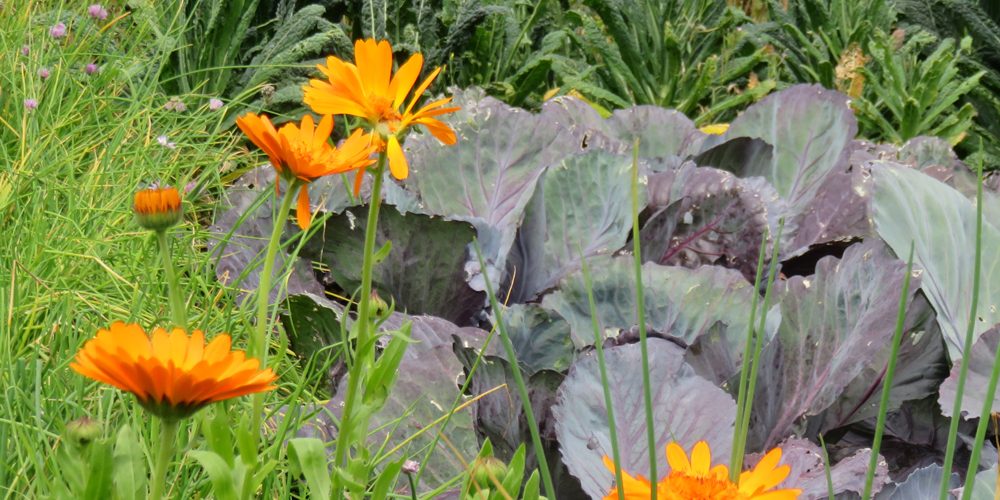Using companion plants is a good way of bringing a bit of balance into the veg plot and allowing nature to work in your favour. It’s not completely fool proof, but planting companions in addition to using other natural methods of pest control can have good results.
There are a vast number of pests that magically find their way into your veg patch as soon as you plant. The usual suspects include aphids, whitefly, greenfly, cabbage white caterpillars and other caterpillars, pigeons, cabbage root fly, carrot fly and, of course, slugs and snails. There are hundreds of others, but you get the picture.
Think of companion plants as little bodyguards for your veg. You pop a few companion plants in a row alongside a row of veg and they’ll either take a hit for the team by attracting the pests to eat themselves rather than the veg that they’re guarding, or they’ll fend them off with their scent.
Here are some ways to get started with companions this coming season:
- Plant a row or bed of nasturtiums alongside your brassicas to protect them from caterpillars. You’ll find that butterflies are attracted to the nasturtiums and will lay their eggs there instead. When the caterpillars hatch, they’ll completely destroy your nasturtiums but your brassicas will remain largely untouched. We can definitely say that this has worked for us many times in the past, however, we’d still encourage you to net your brassicas with mesh netting so that your plants stand an even better chance.
- Pop a few plants from the allium family in a row alongside carrots to deter carrot fly. Onions, spring onions, leeks, chives and garlic chives work well. The smell masks that of the carrot plant so that the carrot fly doesn’t bother paying your plants a visit in the first place. We will often plant a full row of onions in between two rows of carrots, for example.
- Marigolds and Tagetes can be used anywhere that aphids and and whitefly are a problem, (a prime place would be in amongst your tomato plants) as they will attract ladybirds and lacewing which will help to keep whitefly and aphids at bay. You can also try planting basil in pots in the greenhouse with tomatoes.
- Mint in pots can help wherever you have problems with flea beetles (lots of leafy veg are affected by these bugs which make lots of tiny weeny holes in the leaves). The strong scent deters the flea beetles.
- Dill and fennel can help to attract lacewings & ladybirds and therefore keep numbers of aphids down.
We do have a Companion Plant Pack that contains Marigolds, Tagetes and Nasturtiums if you’d like to make a start with using companions in your vegetable garden.

